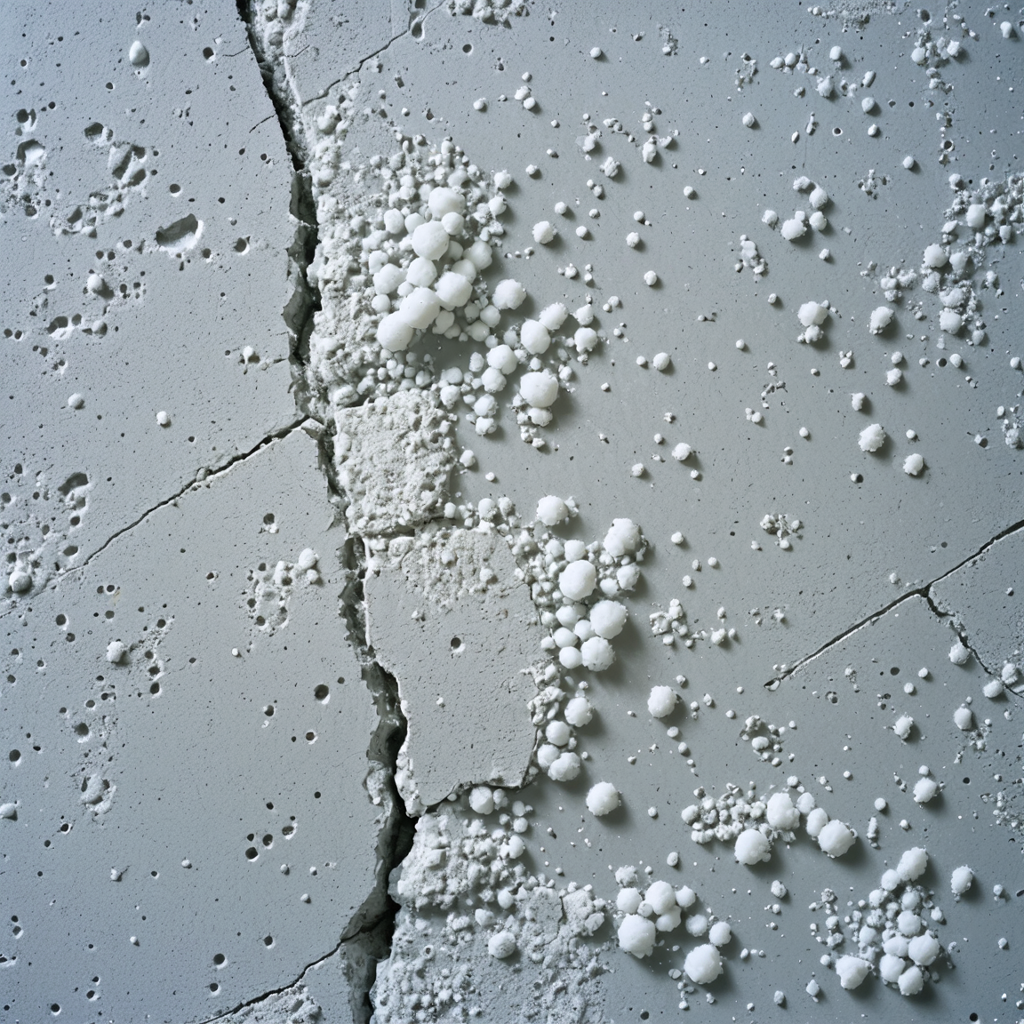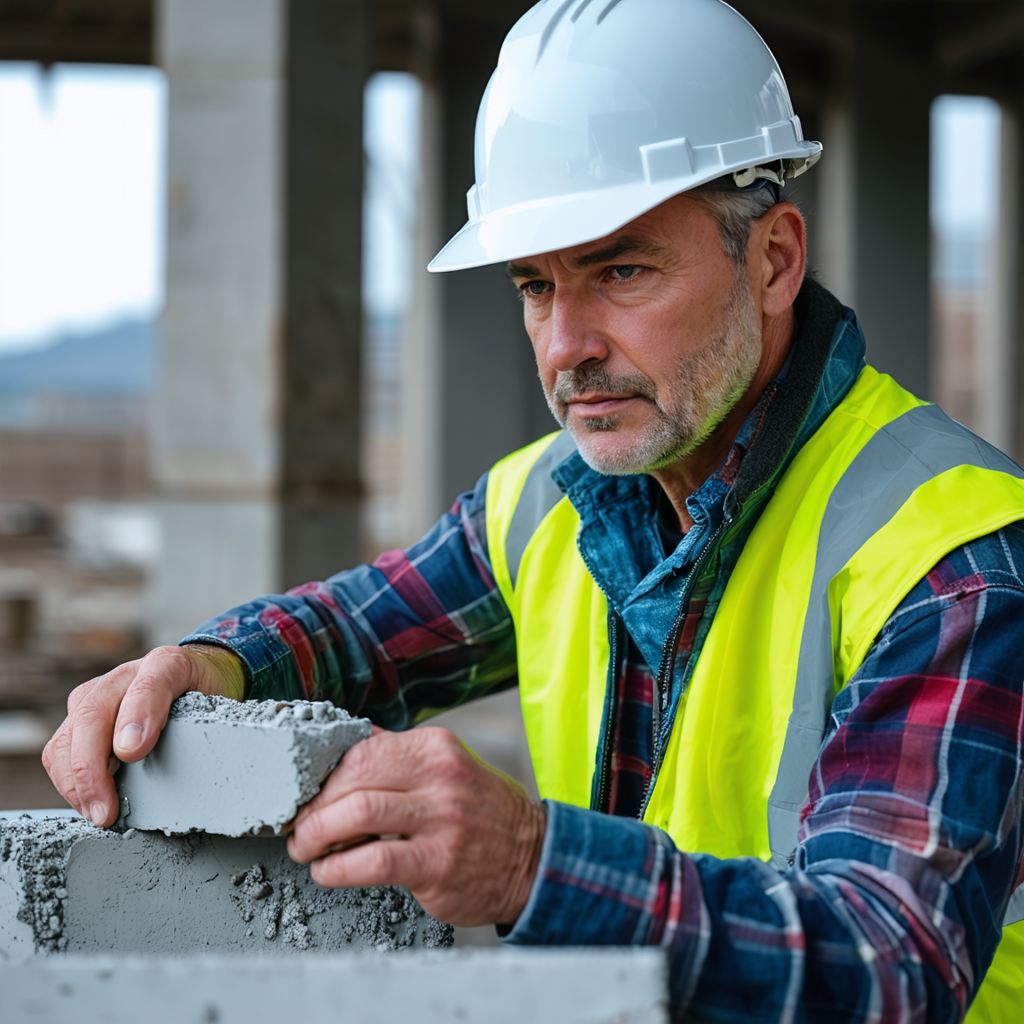Unlocking the Mysteries of Self-Healing Concrete
Ever marvelled at nature’s ways?
The amazing ability of living organisms to regenerate their damaged parts is a wonder that baffles and inspires. This healing capacity of nature is the inspiration behind the innovative concept known as self-healing concrete.
Straying away from conventional concrete, this self-repairing variant significantly alters the way concrete infrastructures behave over time. In this article, we’ll walk you through what makes self-healing concrete an incredible innovation, the science that empowers it to heal its own cracks and damages, and its potential benefits and challenges.
So, are you ready to explore the world of self-healing concrete that is paving its way, quite literally, into our built environments? Hold on, as we cement this fascinating subject into your understanding!
Table of Contents
Self-Healing Concrete Explained
Overview of Self-Healing Concrete
Self-healing concrete is an innovative building material that has the inherent ability to repair its own cracks and damages over time. This advanced concrete type aims to increase the longevity and reduce maintenance costs of concrete structures.
How Self-Healing Concrete Works
Self-healing concrete employs various methods to achieve its self-repairing properties, primarily categorized into two types: chemical-based and biological-based.
Chemical-Based Self-Healing
Chemical-based self-healing concrete utilizes chemical agents that activate upon contact with water or air.
- Microcapsules filled with adhesive: These capsules break open when a crack forms, releasing the adhesive to seal the crack.
- Polymer additives: Special polymers are mixed within the concrete. When a crack forms, these polymers rehydrate and swell, filling the gaps.
Biological-Based Self-Healing
Biological-based self-healing concrete involves using bacteria and nutrients that generate calcite to repair cracks.
- Bacillus bacteria: Specific strains of bacteria can thrive in the alkaline environment of the concrete and produce calcium carbonate to fill cracks.
- Nutrients: These bacteria are encapsulated with nutrients like calcium lactate, which the bacteria use to activate and grow when the concrete cracks and becomes exposed to water.
Benefits of Self-Healing Concrete
Utilizing self-healing concrete comes with a number of significant benefits:
| Benefit | Description |
|---|---|
| Durability | Enhances the lifespan of concrete structures by reducing the frequency and severity of cracks. |
| Cost-Effective | Reduces maintenance and repair costs over the long term. |
| Environmental Impact | Decreases the need for concrete production, thus lowering CO2 emissions associated with its manufacture. |
Challenges and Considerations
Despite its benefits, self-healing concrete also faces several challenges:
- Cost: Initial production costs can be high.
- Integration: Ensuring consistent distribution of self-healing agents within the concrete mix can be difficult.
- Performance: Effectiveness may vary based on the size and type of cracks.
For more detailed information about the advancements in self-healing concrete, check out the Scientific American article on self-healing materials.
An Inside Look at Self-Healing Concrete

Origins of Self-Healing Concrete
Self-healing concrete, while seemingly futuristic, is rooted in natural instances of biological healing. The concept of self-healing is conspicuously present in nature—body tissues regenerating, trees covering wounds with new growth, etc. Applying this natural principle to man-made materials, crystallized in the concept of self-healing concrete.
Differences Between Conventional and Self-Healing Concrete
While conventional concrete structures develop microscopic cracks over time, leading to structural failure if left unrepaired—self-healing concrete is revolutionizing this narrative.
When cracks appear in self-healing concrete, the previously mentioned healing agents (chemicals or bacteria and nutrients) kick into action, filling these cracks.
Thus, the structure maintains its strength and integrity for a longer period of time.
Applications of Self-Healing Concrete
Self-healing concrete can have wide-ranging applications. For instance, in:
- Infrastructure: Bridges, tunnels, highway pavements, and buildings can incorporate this technology to last longer.
- Marine Structures: Harbors, docks, and offshore platforms can benefit due to the perpetual exposure to rugged weather conditions and moisture.
- Nuclear Facilities: Given the material’s ability to self-heal without human intervention, it adds safety to such facilities.
Future Scope and Possibilities
The future holds immense possibilities for self-healing concrete. As research progresses, scientists are finding ways to improve the effectiveness of the healing agents and bring down the initial high costs, thus broadening the mass-market viability of this innovation. Particularly, developments in nanotechnology could further enhance the self-healing mechanism, providing even robust solutions.
Self-Healing Concrete vs. Other Self-Repairing Materials
While concrete is the focus, it is not the only material undergoing development for self-repair. Other self-healing materials include metals, ceramics, polymers, and composites. For instance, self-healing polymers are being devised for applications like electronics, espousing a future where scratched phone screens could mend themselves!
Of these, self-healing concrete currently holds a prominent position given our heavy reliance on concrete for infrastructure.
According to an Economist report, built environments could witness substantial transformations with the integration of self-healing concrete and other self-repairing materials.
What Is the Difference Between Self-Healing Concrete and Regular Concrete?
Structural Integrity
Regular concrete is prone to cracking due to various factors such as thermal expansion, moisture ingress, and mechanical stress. These cracks, if not repaired, can compromise the integrity and safety of structures, leading to more serious damage over time.
In contrast, self-healing concrete possesses active agents that automatically seal these cracks as they form, maintaining the structural integrity without immediate human intervention. This results in a much more resilient and durable infrastructure.
Cost Implications
Regular concrete generally has a lower initial cost compared to self-healing concrete. However, over the lifespan of a structure, the cost of maintenance and frequent repair work can add up significantly.
On the other hand, while the initial investment in self-healing concrete is higher, its long-term cost efficiency is notable. The reduced need for repairs and maintenance can offset the initial costs, proving to be more economical in the long run.
Environmental Impact
The manufacturing of traditional concrete is resource-intensive and contributes substantially to CO2 emissions. The frequent repairs and replacements also generate additional waste and energy consumption.
Self-healing concrete offers a greener alternative by reducing the need for frequent repairs, thereby lowering the overall environmental footprint. This leads to a decrease in the demand for concrete production, which in turn reduces CO2 emissions and resource consumption.
Durability and Longevity
Regular concrete tends to degrade over time due to its vulnerability to cracking, leading to potential structural failures if not properly maintained.
Self-healing concrete, with its crack-sealing capabilities, extends the lifespan of structures significantly. By continuously self-repairing, this type of concrete effectively manages minor damages, preventing them from escalating into larger issues.
Technological Complexity
The production and application of regular concrete are relatively straightforward and well-standardized across the construction industry.
Self-healing concrete, however, involves more advanced technology and precise incorporation of healing agents. This complexity can pose a challenge in widespread adoption, necessitating specialized knowledge and techniques for effective implementation.
Applications and Usage
Regular concrete is versatile and widely used in numerous construction projects ranging from residential buildings to large infrastructure works like dams and highways.
Self-healing concrete is particularly beneficial in critical and high-stakes environments such as:
- Bridges and overpasses where constant structural integrity is essential.
- Marine structures that face constant exposure to harsh weather conditions and salinity.
- Nuclear facilities where self-maintenance can drastically enhance safety.
- Highways and pavements to minimize the disruption caused by repair works.
Future Trends in Concrete Technology
Emerging trends in concrete technology indicate a growing focus on sustainability and efficiency. Self-healing concrete aligns well with these trends, offering a promising alternative to traditional concrete.
Additionally, innovations in nanotechnology and bioengineering are expected to further enhance the self-repair capabilities of concrete, making it even more robust and cost-effective.
With continuous research and technological advancements, self-healing concrete could soon become a mainstream choice in the construction industry, significantly altering how infrastructure is built and maintained.
Downsides of Self-Healing Concrete
High Initial Production Costs
One of the primary drawbacks of self-healing concrete is its high initial production costs. The advanced materials and technologies required to produce self-healing concrete make it significantly more expensive upfront compared to traditional concrete. This cost barrier can be a deterrent for widespread adoption, especially in projects with tight budget constraints.
Complex Manufacturing Process
The manufacturing process for self-healing concrete is more complex and requires precision to ensure the proper integration of healing agents. This complexity can lead to higher labor and production costs and necessitates specialized equipment and expertise.
Inconsistent Performance
The effectiveness of self-healing concrete can vary depending on several factors, including the size and type of cracks, environmental conditions, and the specific self-healing mechanisms used. Larger or complex cracks might not heal as effectively, posing a challenge in certain applications.
Limited Availability of Raw Materials
The raw materials needed for biological or chemical healing agents are not always readily available or easy to produce in large quantities. This limitation can hinder the scalability of self-healing concrete solutions, especially in regions with restricted access to high-quality materials.
Environmental Concerns
While self-healing concrete can reduce the overall environmental impact by decreasing the need for frequent repairs, the initial production process can still have significant environmental ramifications. The creation and integration of specialized healing agents can involve environmental costs that offset some of the long-term benefits.
Regulatory and Standardization Challenges
The construction industry heavily relies on standardized materials and methods. The introduction of self-healing concrete requires changes in building codes and standards, which can be a lengthy and complex process. Additionally, gaining regulatory approval for new materials involves rigorous testing and validation.
Health and Safety Concerns
The use of chemical agents and bacteria in self-healing concrete can raise health and safety concerns. Proper handling, storage, and application procedures need to be established to ensure that workers and end-users are not exposed to potentially harmful substances.
Wrapping Up
Self-healing concrete, a revolutionary building material, carries the impressive ability to automatically repair its own cracks.
Utilizing chemical agents or bio-engineered bacteria and nutrients, this innovative form of concrete ensures greater longevity and cost-effectiveness for structures.
Despite higher initial production costs and certain complexities in its making, the potential of this technology in improving infrastructure durability and curbing the environmental impacts associated with traditional concrete is significant.
As advancements continue, self-healing concrete promises to remodel the construction industry and the way our built environments function.
Frequently Asked Questions – FAQs
How does self-healing concrete work?
Self-healing concrete works by integrating healing agents – chemical or biological – into the concrete. When cracks appear, these agents are activated, fixing the damage automatically.
Why is self-healing concrete more expensive than regular concrete?
Higher initial costs for self-healing concrete stem from the advanced materials and technologies involved in the production. Despite this, it proves more cost-effective over time due to reduced repair and maintenance costs.
What kind of applications does self-healing concrete have?
Self-healing concrete is particularly beneficial in critical infrastructures like bridges, marine structures, nuclear facilities, highways and pavements, where durability is essential and repair works can be disruptive.
What are the environmental impacts of self-healing concrete?
Although the production process of self-healing concrete may have certain environmental costs, it reduces the demand for concrete production, thus lowering CO2 emissions. Additionally, by extending the lifespan of infrastructure, it reduces waste and energy consumption associated with frequent repairs and replacements.
What are the downsides of self-healing concrete?
Despite its many benefits, self-healing concrete has its drawbacks. Initial production costs can be high, making it less accessible for smaller budget projects. The production process is complex, and the performance can be inconsistent. There can also be concerns about the availability of raw materials, environmental impact, and health and safety considerations.






